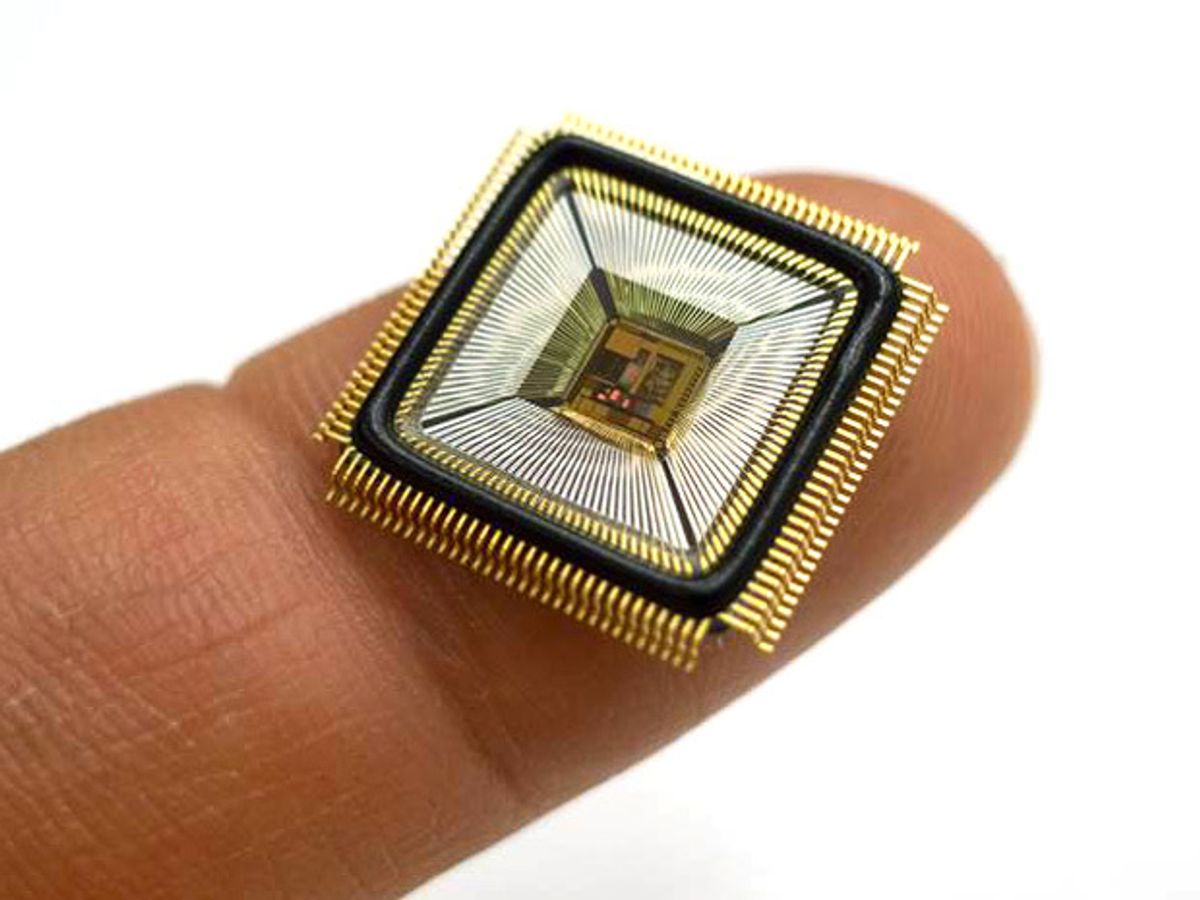Cochlear implants are among the most successful hearing devices out there. They have been around for about 30 years and more than 220 000 people worldwide enjoy restored hearing because of them. But they require clunky hardware mounted onto the skull and behind the ear that limit their use in the shower and often stigmatize the people who wear them. But this week, a team of scientists will present a new, alternative design that eliminates all the external hardware of the traditional cochlear implant and allows it to be charged wirelessly with a smartphone.
The key to the new design is an implantable low-power signal-processing chip developed by Anantha Chandrakasan and his colleagues at MIT in Cambridge, Mass. The team cleverly integrated its microchip with an implantable piezoelectric sensor, and has tested the system in a human cadaveric ear. They will present their paper this week at the International Solid-State Circuits Conference in San Francisco. (Chandrakasan is the same researcher who in 2012 demonstrated how to harvest energy from the middle ear.)
Chandrakasan's new device works like this: A piezoelectric sensor mounted at the umbo in the middle ear picks up sound. That signal, a measure of the sound-induced motion of the umbo, travels to the microchip implanted elsewhere in the ear, where it is conditioned, digitized and processed. The chip then converts the signal to electrical waveforms and pumps them to electrodes implanted in another part of the ear called the cochlea. The waveforms received by the electrodes stimulate auditory nerve fibers and make the sound audible to the user. The device can be charged wirelessly in just a couple of minutes using a mobile phone and special adapter.
The design would be a huge improvement over existing cochlear implants, which require the user to wear the external components—mainly for power—at all times.
Researchers elsewhere have been working on alternatives to today's cochlear implants as well. In 2012, Darrin Young at the University of Utah designed a MEMS-accelerometer-based middle ear microphone that also moves all the external components of the cochlear implant inside the body. But Young's sensor draws a few milliwatts of power—more than MIT's design. An implanted rechargeable battery will be required. Young says his team is working on improving the prototype. "We are expecting a further power reduction by at least a factor of 20. This will bring down the power below 100uW," he said.
Further work, particularly on the sensor component, is needed before MIT's chip is ready to be implanted in a human. The geometry of the sensor still needs to be optimized, as does the method of stabilization, says Konstantina Stankovic at Harvard Medical School, who collaborated on the project. "A tricky thing with the implantable sensors has been stable placement and avoidance of sensing bodily noise," she says.
Emily Waltz is a features editor at Spectrum covering power and energy. Prior to joining the staff in January 2024, Emily spent 18 years as a freelance journalist covering biotechnology, primarily for the Nature research journals and Spectrum. Her work has also appeared in Scientific American, Discover, Outside, and the New York Times. Emily has a master's degree from Columbia University Graduate School of Journalism and an undergraduate degree from Vanderbilt University. With every word she writes, Emily strives to say something true and useful. She posts on Twitter/X @EmWaltz and her portfolio can be found on her website.



